
|   |

|   |
 e-mail: sunilkothari1933@gmail.com Festivals round up January 29, 2017 During the season with so many performances taking place simultaneously, one often has to choose out of the multiple performances, few which one would like to see and forego others. I have selected a few in this review of Festival Round up. Remembering Chandralekha 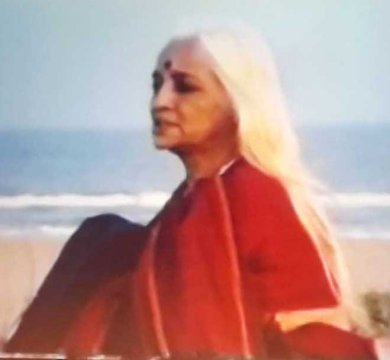 Chandralekha 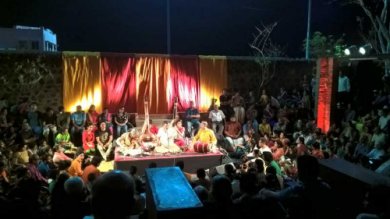 TM Krishna concert 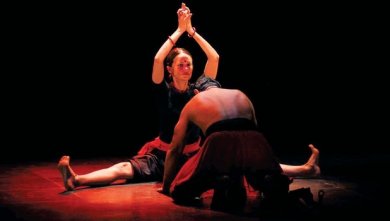 Sharira On 29th December again there was a large crowd as Sharira which was choreographed and rehearsed there held memories for those who had seen it there. I was privileged to attend rehearsals and see its performance there. It brought happy memories and one was struck by its amazing presentation by Kalaripayattu master Shaji John and Tishani Doshi to the live Dhrupad music by Gundecha Brothers. Its choreography is minimal and is performed in ati vilambit laya testing the patience of the audience. But every time in recent years I have seen it in Delhi and other cities, I find it extremely fascinating and marvel at Chandra's originality. Dealing with feminity and female sexuality it is a bold and radical work proving that Chandra was far ahead of her time. On 30th December, two segments of Chandra's earlier work Sri (1991) in reconstructed form was presented by young dancers who had not seen Chandra's works nor were exposed to her ideas. Chandra's former three dancers Padmini Chettur, Krishna Devanathan and Meera had assisted the young dancers. And resource material was only film, as Chandra did not like video recording when rehearsing and performing. But a film was taken which was used to reconstruct first twenty five segments. The theme deals with female power and recovery of spine, a metaphor Chandra used in her dance. How the spine energises the space was seen in this twenty five year old work. It is so different and incorporates abstraction, minimalism, strength, power of body and image of Dashabhuja, ten armed woman who stands on her own. A difficult project but worth undertaking. The problem in reconstructing such works are not to make it a copy of the original but it must resonate with new energy and convey the intent of the choreographer. Of late there has been renewed interest in Chandra's life, work, ideas, approach to dance, and her philosophy. One laments that there is not enough archival material to fall back upon. Six universities have in their curriculum included Chandra's works for study. After ten years of her departure there is a renewed interest in her philosophy and choreographic works. In various forums - be it dance, theatre, feminist approach, body and Chandra's philosophy. Sadanand Menon is looking after Chandra's videos, films and interviews to make them accessible for researchers and dancers. Trimurti Kalavardhini, I was told, holds every year a one day program with blessings of Swami Dayanand Saraswati. A large audience interested in Vedic studies turns up filling the Music Academy auditorium. This is another type of crowd unlike the music and dance crowd, and watches the presentation which is aimed at bhakti and leads audience to religion and reiterates the faith in divinity. The programme was titled Trimurti. The organizers had invited Alarmel Valli as a chief guest to address the audience. Valli with her excellent articulation spoke about her early sittings for Vedic studies and later on learning dance experienced the ananda, similar to Brahmananda as Abhinavagupta says and about Rasa. She spoke on how dance takes us to the path of devotion and is one of the ways one understands the philosophy. The well known multi-faceted artist, anchor, actor, orator, singer Revathy Sankkaran introduced the programme and artists. Trimurti theme was divided into four presentations. Kathak maestro Pandit Birju Maharaj and his troupe including Saswati Sen presented Brahma and his consort Saraswati. In some mythological versions, Saraswati is daughter of Brahma. Birju Maharaj at his advanced age still succeeds in casting a spell on his admirers. Though he cannot perform nritta as he used to in his youth, the glimpses he gives of it concentrating on abstract numbers and leading to rasanubhava is amazing. Saswati and other dancers performed prayers in praise of Goddess of learning. Brahma's role as creator was eulogised. The form of Kathak was used to embellish it. Vyjayanthi Kashi in Kuchipudi choreographed theme of Lord Vishnu, incorporating churning of the ocean and how Lord Vishnu took form of Mohini and distributed elixir to Devas. The duet by guest artist Mohanapriyan Thavaraja from Apsara Arts, Singapore, as Vishnu and Prateeksha Kashi as Mohini, dancing together back to back so when Vishnu moved to side of Devas, they saw Vishnu and when Mohini moved to side of Asuras, they saw Mohini, was a brilliant choreographic device. The troupe performed dramatically. 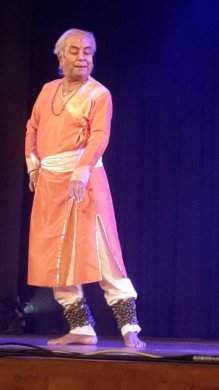 Pandit Birju Maharaj 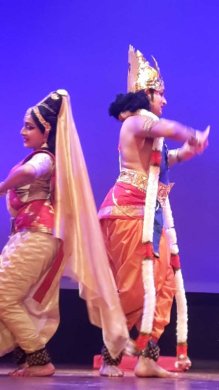 Prateeksha Kashi & Mohanapriyan Thavaraja Sonal Mansingh choreographed in Odissi and also other free style the story of Lord Shiva through Navarasa and with her repertory troupe presented various sequences of nine sentiments like shringara, showing wedding of Lord Shiva and Parvati, bibhatsa showing bhutas in cemetery. She enacted sitting on one side the rasas and the musicians rendered the libretto. The presentation was dramatic and brought out various emotions successfully which audience enjoyed. Shashadhar Acharya in Chhau dance forms showed Trimurti aspects of Brahma, Vishnu and Mahesh in imaginative manner, using Seraikella masks, technique of Purulia and also masks and included Mayurbhanj Chhau for delineating dance of Shiva. Brahma was shown with mask and how demon stole the Vedas, which were rescued by Vishnu in form of Matsya. Vishnu theme was shown in Mayurbhanj Chhau where Gada, Padma, Sudarshana and Shankha were shown performing dance and then Chaturbhuja, four armed Vishnu was depicted with another dancer standing behind the main actor. The Nataraja dance with several dancers taking aerial movements and typical Mayurbhanj dance was spectacular. Using three forms of Chhau dance, Shashadhar as a choreographer imaginatively summed up how Trimurti as form of God is one. The shehnai player provided melodious music and the drummers created the vibrant vigorous sounds to enhance mood of Tandava dance. The costumes were eye catching. Shashadhar Acharya is a gifted choreographer and it was indeed his praiseworthy attempt to bring out the unity of theme through different Chhau styles. The Hindu Lit for Life Festival 2017 and dance This year in January, The Hindu Lit for Life Festival at Sir Mutha Venkatasubba Rao Concert Hall was inaugurated by the renowned painter Gulam Mohammed Sheikh from Baroda. He is a distinguished poet and writer besides a gifted painter. He spoke of the space this festival offers for civilized dialogue, and congratulated the organizers for such a festival which could serve as Proxy University. 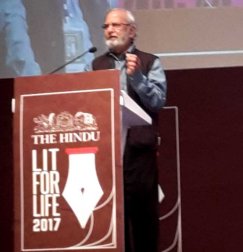 Gulam Mohammed Sheikh 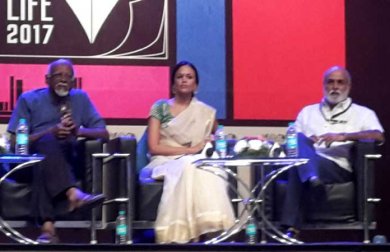 Sadanand Menon, Tishani Doshi, Shashi Kumar The first session began with Remembering Chandralekha. Shashi Kumar moderated it. Sadanand Menon and Tishani Doshi were in conversation. That Chandralekha had received training from greatest masters like Elappa Pillai and was a major dancer was told by Sadananda and in brief her life - How she came to Chennai, studied dance and after a very successful career began to question about the themes she performed and sought new directions in dance, giving up dance for more than 12 years, devoting her time to writing, reading, travelling, inquiring about how dance could relate to life. A rare documentary made by Shashi Kumar was screened in which Chandra speaks about why she cannot relate to themes of Makhan chori, how her consciousness was different from her gurus and how theirs was different from hers. How she loves Bharatanatyam form. Sadanand also gave in brief, history of Chandra's returning to dance and choreographing themes which were different from mythological stories. And women related, women power, empowering women, freeing women from patriarchy – the choreographic works which used Yoga and Kalaripayattu physical exercises enriching Bharatanatyam form. From Angika to Sharira, how her works impacted the dance scene. Tishani Doshi, the poet, author, writer, and Yoga practitioner spoke about how she met Chandralekha when she was taking lessons in Kalaripayattu with Shaji and through conversation developed rapport with her. Chandra was an exceptional woman, thinker, dancer, and writer and lived her life independently on her own terms. Chandra liked Tishani's openness and invited her to participate in Sharira and from then she never looked back. After Padmini Chettur left, Tishani took over performing in Sharira. The work choreographed in 2000 is still being performed within India and abroad and has helped her to understand Chandra's philosophy about dance and what she sought through it. Sadanand screened excerpt from film 'Maya Darpan' by Kumar Shahani in which Chandra had choreographed the dance sequence. Chandra, Kumar and I had visited Baripada to select the Mayurbhanj Chhau form for that sequence. This is rarely seen as the film was not a box office success. Chandra had also choreographed a sequence for Shashi Kumar's film 'Kayataran' in which Tishani and Navtej Johar, Bharatanatyam and contemporary dancer, had performed. This was perhaps for the first time that during Chandra's 10th death anniversary there was a public discourse in a major literary festival. 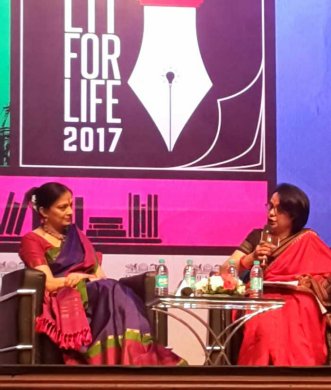 Malavika Sarukkai and Sreemathi Ramnath 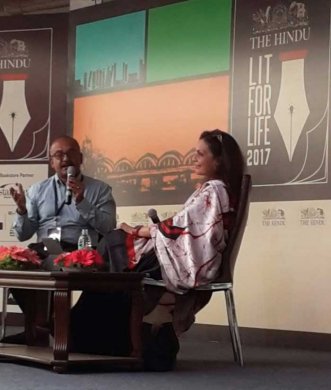 V. Sriram and Anita Ratnam Another session with a dancer was on 15th January at the festival when Malavika Sarukkai and Sreemathi Ramnath were in conversation. Malavika spoke about why Bharatanatyam is for her contemporary. An excerpt from 'Gandhari' film made by Prasanna was screened in which Gandhari visits the battle field and is aghast and weeps for the sons killed. Sreemathi Ramnath mentioned Lamentation by Martha Graham and also referred to Pina Bausch and how she charted her own path. Malavika demonstrated a sequence from Trees choreographed by her about Timakka's planting trees when she did not bear children. The shift in thematic content was important, Malavika mentioned. Her presentation was applauded by the audience. Last year during the Hindu Lit Fest 2016, Alarmel Valli was invited to participate. Anita Ratnam was in conversation with V. Sriram on topic of 'Women who mapped the Change' on January 16th referring to Dr. Muthulakshmi Reddy from courtesan community for whom a bill had to be passed for a girl to be allowed to study as only boys were allowed to. She also piloted bill for abolition of dance in temples by devadasis. Anita referred to Durgabai Deshmukh and V. Sriram gave interesting details about her unusual life, her marriage with politician Chintaman Deshmukh, and how Durgabai was a revolutionary woman who studied and devoted her life in uplifting the status of women. However, because of parallel session on 'Celebrating the Word' on A.K.Ramanujam by Guillermos Rodriguez in conversation with his dancer wife Monica de la Fuente, I could not attend the complete session by Anita and Sriram. 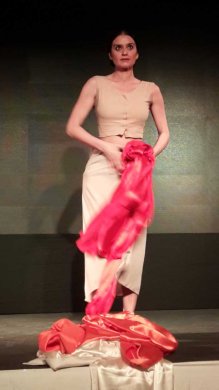 Monica de la Fuente
Guillermos is working on Ramanujam's papers which are deposited in Chicago University where Ramanujam taught. He recited Ramanujam's poems to which Monica performed. Monica studied Bharatanatyam at Kalakshetra and later on went to Kerala to learn Kathakali. Both complement each other and their work displayed deep involvement. Sadanand was asked to moderate the session. The session in which Aruna Sairam spoke with V. Sriram on Carnatic music and her journey was another highlight of the Lit Fest. It is a unique festival in which theatre, classical music, dance, cinema, painting, sculpture and literature are included. Authors from abroad also participate. For three days attending various sessions, one learns a lot. And the interaction with authors, politicians, intellectuals is indeed invigorating. I would recommend dancers in particular to attend this festival as it offers a fascinating fare for one to think about and relish.  Dr. Sunil Kothari is a dance historian, scholar, author and critic. He is honored with Padma Shri, Sangeet Natak Akademi award and Senior Critic Award from Dance Critics Association, NYC. Post your comments Please provide your name and email id when you use the Anonymous profile in the blog to post a comment. All appropriate comments posted with name & email id in the blog will also be featured in the site. |